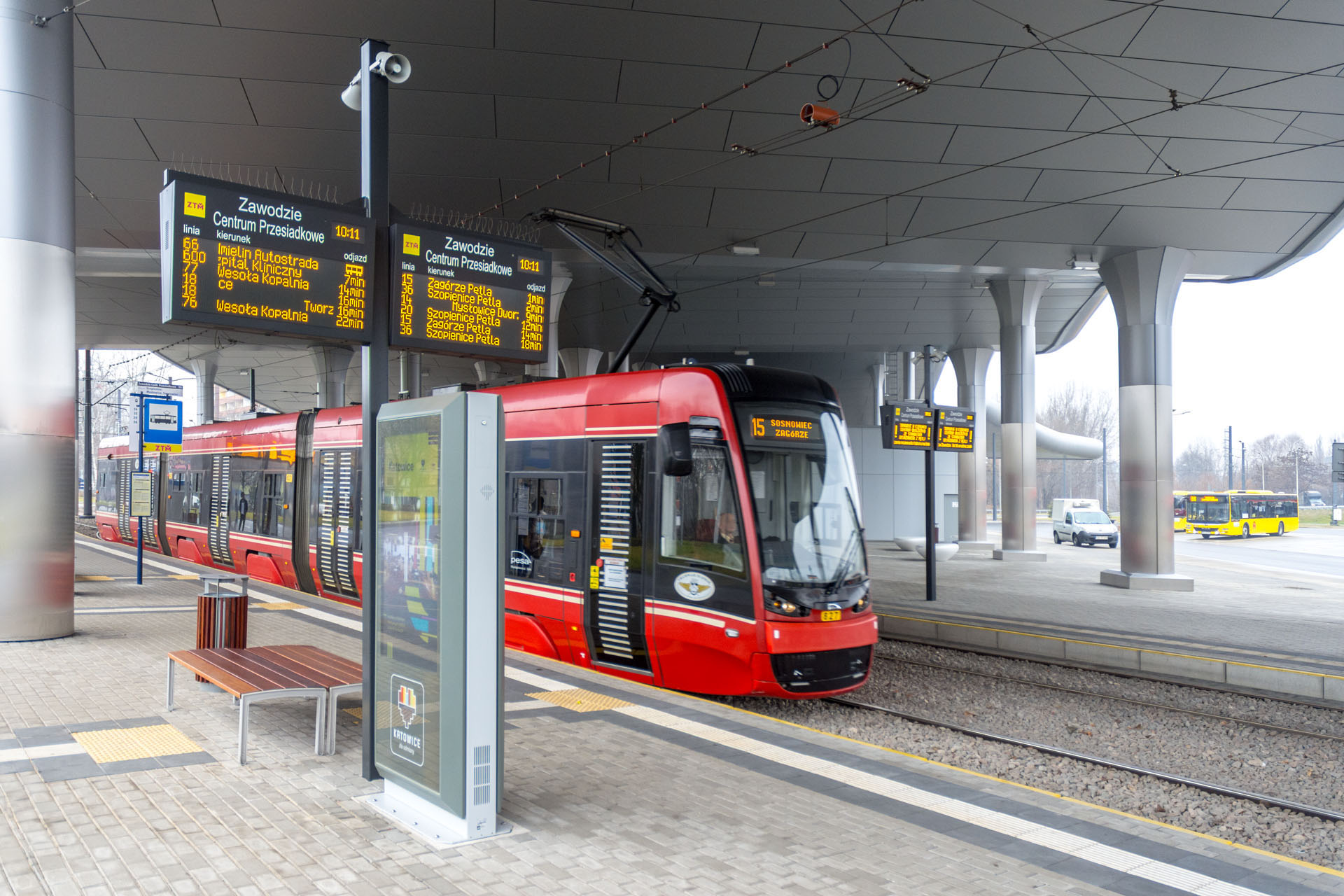
The largest interchange station in Katowice – Zawodzie – has been completed. The total cost of its construction exceeded 95 million PLN. Its Dynamic Passenger Information Displays, info kiosks and ticket machines have been implemented by Dysten.
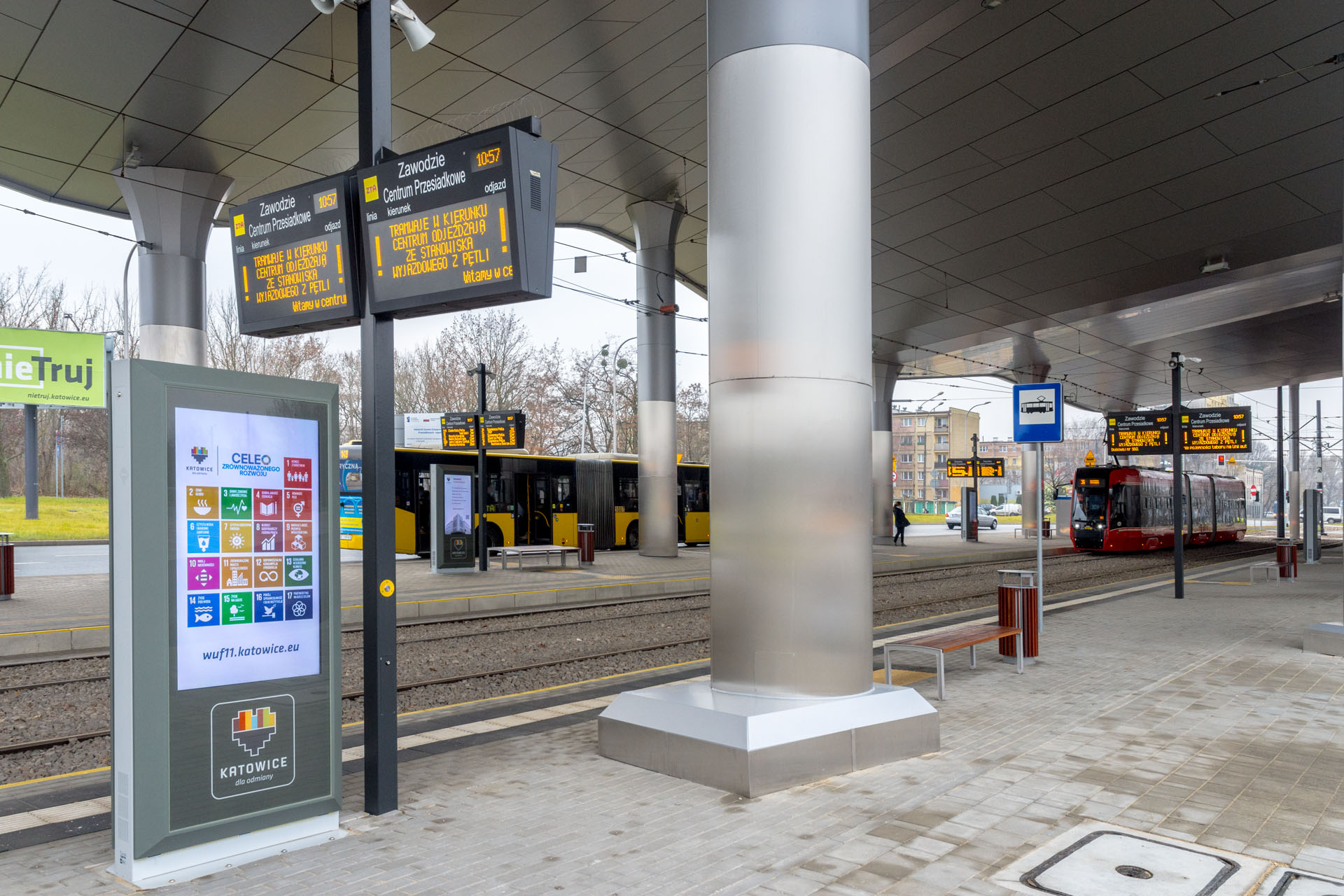
Passenger and city information, and… payments
The Dynamic Passenger Information System implemented by Dysten includes 12 two-sided energy-saving platform amber LED displays, integrated with TTS (Text-to-Speech) solutions for the visually impaired and blind. Dysten has also provided 12 two-sided info kiosks and 3 ticket machines handling payments by ŚKUP card (Silesian Public Services Card), cash, contact and contactless cards (the latter is the best idea during the pandemic since it prevents the transmission of the Covid-19 virus).
The dynamic passenger information boards display the actual departure times of each bus or tram line, the current time and messages entered by the operator. They are suitable for continuous 24/7operation.
The data of buses and trams, equipped with locators, are processed by the system in real-time. Their GPS position is specified, and disruptions, congestion, traffic jams and many other parameters are analysed. Passenger information is also available online (on a computer) and in the mobile version on smartphones as part of the integration with the DPIS of the metropolis. The Text-To-Speech (TTS) system reads out all messages displayed on the board when you press the highlighted key located on the post.
The Dynamic Passenger Information Displays (PIDS) are able to display additional information for passengers, e.g. temperature, air quality, weather or health warnings, which can be provided by the Inspectorate for Environmental Protection. Such messages are most often displayed in the last line of the board, following the information on bus and tram services.
12 two-sided info-kiosks can display any static or dynamic content in full colour: city and tourist information or advertising, depending on the operator’s decision.
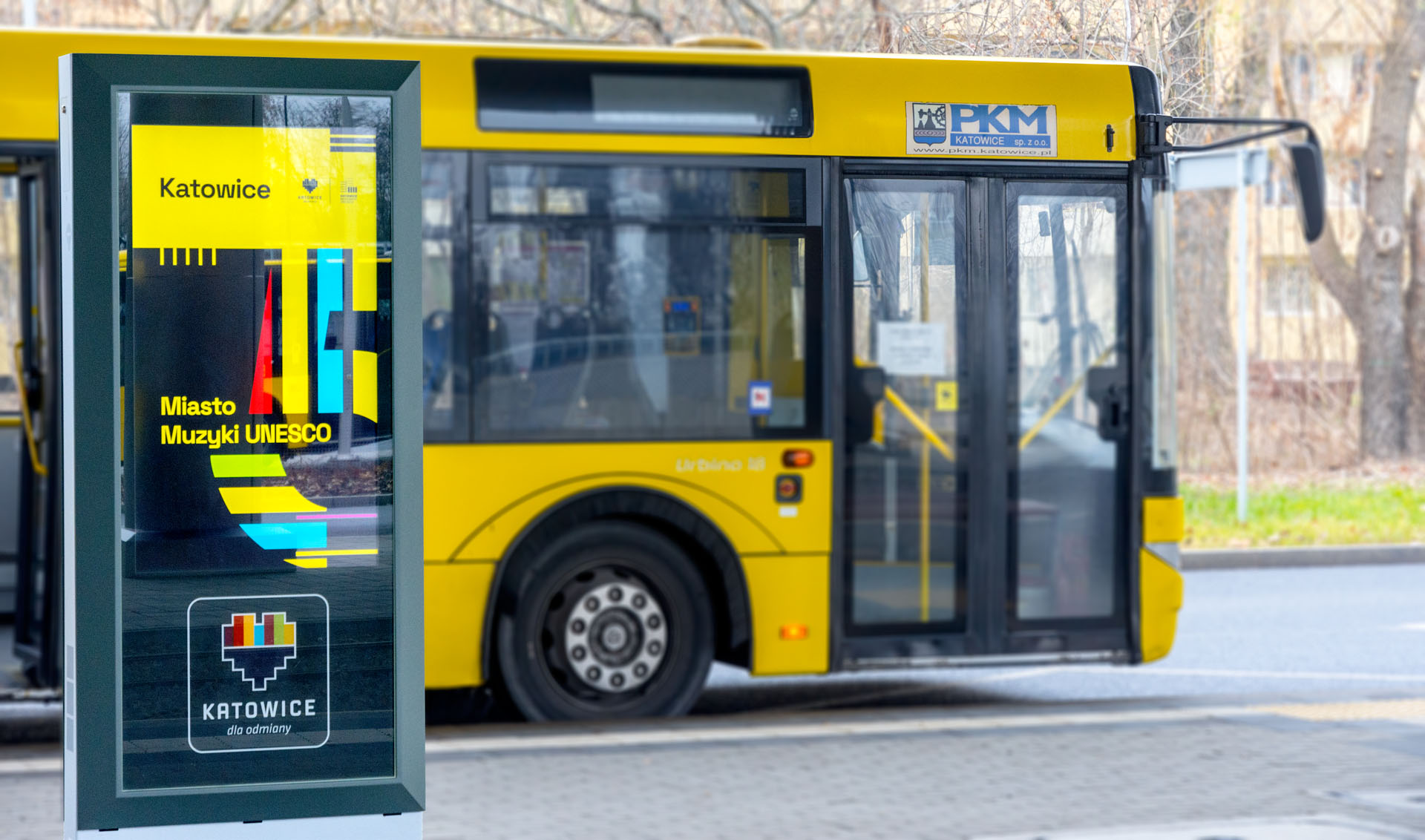
Network of interchange stations
The city of Katowice is building a network of interchange stations in order to reduce the number of cars in the city centre, increase the flow of passengers by public transport and reduce negative phenomena – air pollution, noise, and congestion in the city.
Due to a systemic approach, the city is counting on gradual changes. The President of Katowice declares that even when the pandemic is over, parking at the Zawodzie interchange station will remain free of charge on production of a valid ZTM ticket – it is obvious that the economic aspect changes the mentality of road users the soonest. The ever-increasing cost of parking in the city centre, expensive fuel, the limitation of traffic in the city centre – all these elements should increase traffic at Zawodzie, which is the largest interchange station in Katowice. For now, passengers are surprised by the size of the facility and the number of available connections, which are likely to increase even more.
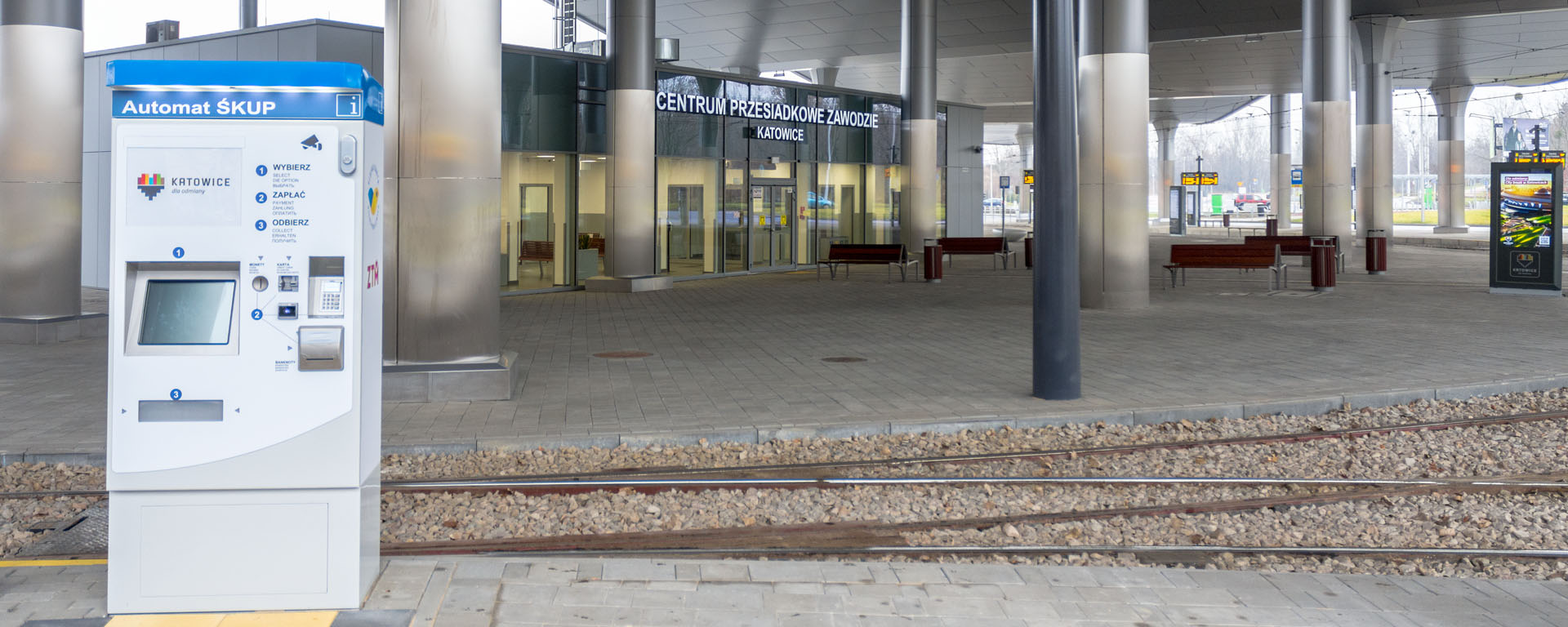
Park & Ride – leave your car, take a tram
It is well known that the PARK & RIDE model works well in western Europe. Germany’s Cologne and Düsseldorf each have 12 similar facilities, which are associated with the Umwelt Zone (Low Emission Zone) concept. This integrated action reduces car traffic and counteracts negative phenomena, decresing air pollution and noise, which turn the lives of residents in the centre of cities into a nightmare. Apart from the pandemic, there will be no rational reason to commute to the centre by your own car. Anyone who has ever searched for a parking place for an hour, circling around, knows the problem.
The challenge for a smart city is the need to combine facilities, software, infrastructure and smartcity development concepts in a way which will be accepted by road users who will then leave their cars in the car park and transfer to public transport. Zawodzie is one of such tests. The facility is equipped with areas nicely named Kiss & Ride, where you can safely stop and say goodbye to the person you drop off.
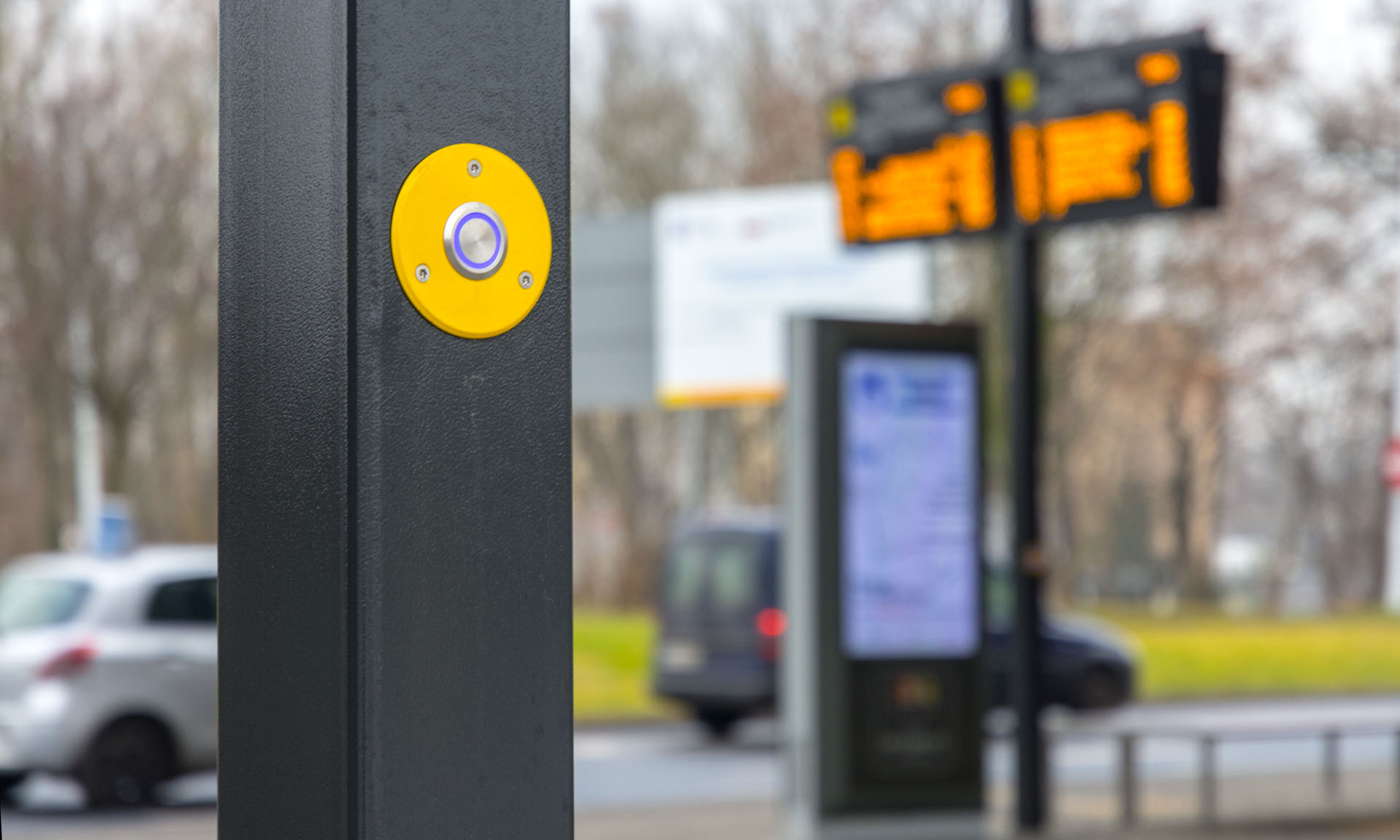
Success will be determined by… users
Preconditions for the success of the idea of interchange stations in Katowice include a sufficient network of connections, easy changes, fast, comfortable searching for information about connections, secure parking free of charge and… patience for the users of interchange stations, for whom this is a new concept. It would be the best if the Zawodzie interchange station had been located near the railway station – this is the obvious direction, but in Zawodzie this was impossible to implement.
Cofunding of the European Union
The city of Katowice’s own funds cover 15% of the total investment costs, the remaining 85% comes from the cofunding of the European Union. The project “Katowice’s Integrated Interchange Stations System – station Zawodzie” has just turned into a modern interchange centre – it was put into operation in the second week of December 2020.
The extension of the metropolis’ DPIS
The Dynamic Passenger Information System of Zawodzie exchanges data with the SDIP of the metropolis (the Upper Silesian-Zagłębie Metropolis – GZM), which has been expanded since 2018 also by Dysten. The new GZM SDIP is the largest implementation of dynamic passenger information in the history of Poland, which adds another 462 dynamic passenger information boards to the existing 77 ones at bus and tram stops throughout the agglomeration.


